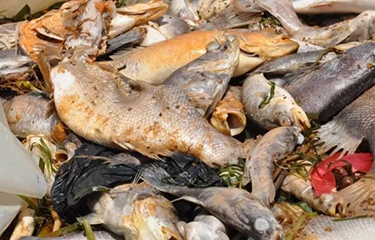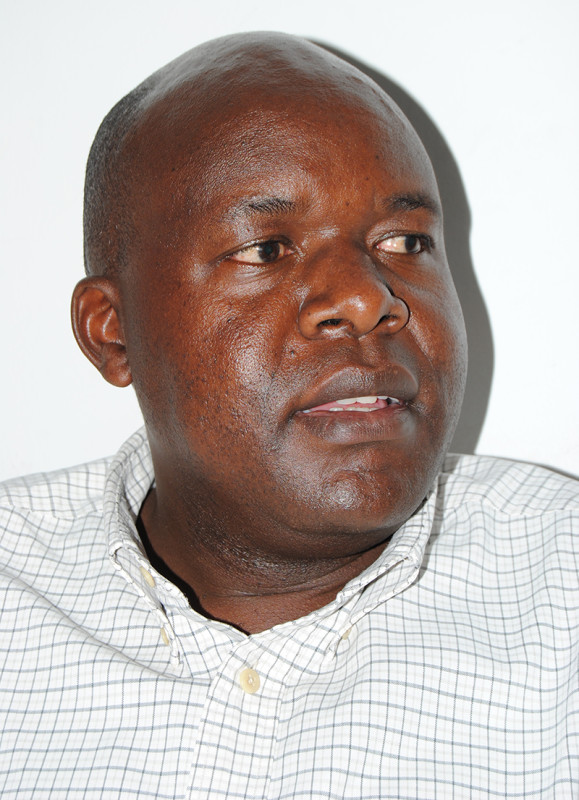Climate change, pollution blamed for massive Lake Victoria fish kills

Recurring episodes of low oxygen levels are inflicting massive losses to aquaculture practitioners on Africa's Lake Victoria, as thousands of tilapia and Nile perch have died.
The lake, which borders Kenya, Uganda, and Tanzania, has seen fish die-offs due to low oxygen for the past two years, with scientists linking the phenomenon to climate change and unregulated development along the lake.
In October and November 2022, fish farms in Kenya's part of the lake reported huge losses as a result of low oxygen levels.
“Hundreds of fish had died (and) others were floating on water, their mouths wide open,” local fish farmer Silvanus Juma told a Kenyan daily newspaper.
Juma said he lost more than 500 fish in a single day, and fellow fish farmer George Ochieng said he had lost more than 10,000 fish.
“We have never experienced such an occurrence in this area. We appeal to the responsible bodies to help us find answers,” Ochieng said.
There has been no official statement from Kenya’s Department of Fisheries on the extent of the fish deaths on Lake Victoria or the value of the losses. But experts including those from the Kenya Marine Research Institute have attributed the latest mass deaths in Lake Victoria to upwelling, a phenomenon where deep water makes its way to the surface due to temperature variations.
“We found out that the lake has recently been experiencing extreme cold and warm temperatures due to effects of climate change,” Kenya Marine Fisheries Research Institute (KMFRI) Director of Freshwater Systems Christopher Aura told local media.
Aura cited instances where water temperatures rose to 28 degrees Celsius, triggering the decomposition of algae and water hyacinth, a process that consumes oxygen stored in the bottom of the lake.
“When the deoxygenated water gets into the cages with minimal water circulation, the fish experience shock, leading to death,” Aura said.
KMFRI introduced a floating fish cage technology program to the area in 2013 to increase fish production, with a secondary aim of conserving the lake's declining wild fish stocks. KMFRI estimates Lake Victoria’s theoritical carrying capacity at 25,427 cages, but the lake currently has 6,000 cages in operation, covering 62,132 square meters, with an estimated output of 10,000 metric tons of Nile perch and tilapia. But those farms have struggled due to deoxygenation.
“In any lake, there is always what we call stratification. There is normally a layer of cold water underneath warm water that is lighter. The colder water in most circumstances does not have enough oxygen because of pollution,” KMFRI CEO James Njiru told The Citizen.
He said due to pollution, algal blooms have sprouted up, consuming huge amounts of oxygen the tilapia and Nile perch rely onto survive.
“The fish that is dying most is the Nile perch, because it is not used to living in areas with low oxygen,” Njiru said.
In 2021, Uganda reported tens of thousands of Nile perch had washed ashore dead and were emitting an offensive odor as they decomposed.
“The occurrence has been attributed to a drop in oxygen levels as Nile perch is a species of fish known to be sensitive to low oxygen levels,” Uganda's National Environment Management Authority (NEMA) said at the time.
The authority said with flooding and rising water levels at the time, large masses of weeds were submerged and sunk into the lake bed and began sucking up oxygen.
NEMA also said strong winds around the Lake Victoria basin have at times “heightened lake overturn, a phenomenon that causes water from the bottom of the lake that is low in oxygen to come up and mix with upper layers, where fish live; leading to a reduction in oxygen."
Photo courtesy of Uganda's National Environment Management Authority






Share